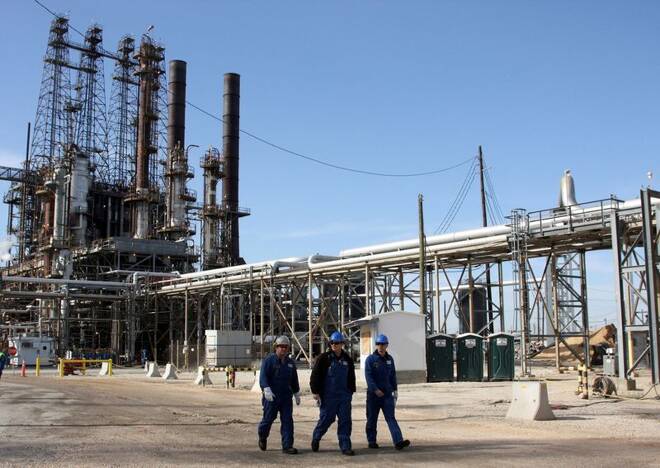Advertisement
Advertisement
U.S. steps up heavy crude imports as Biden blasts profiteering
By:
By Arathy Somasekhar HOUSTON (Reuters) - U.S. refiners last month imported the most heavy crude in nearly two years, customs data showed, as they cranked up motor fuel production and sought to replace sanctioned Russian oil.
By Arathy Somasekhar
HOUSTON (Reuters) – U.S. refiners last month imported the most heavy crude in nearly two years, customs data showed, as they cranked up motor fuel production and sought to replace sanctioned Russian oil.
Higher heavy-crude imports are common in summer-driving months, but this year’s increase comes as the Biden administration is calling on for refiners to ramp up output and shave profit margins to ease soaring prices. The administration has asked for a parley to explore further efforts.
Heavy crudes are cheaper than lighter shale oils produced in the United States and typically make more diesel and less gasoline. Diesel stocks are draining, with U.S. inventories down 19% last month, and margins are soaring, boosting refiners’ profits.
Refiners imported 33.5 million barrels of heavy crude in May, the highest in nearly two years, customs data showed, with 56 vessels discharging nearly 1.1 million barrels per day (bpd)of Mexico’s Maya, Ecuador’s Napo and Oriente and Iraq’s Basra heavy, among other grades.
“We have healthy demand, low products inventories, and strained refining capacity,” said Refinitiv senior energy analyst Corey Stewart. “Refiners are looking to bring feedstocks into the U.S. to most economically meet what products the markets demand,” he added.
Margin boost
Increased diesel production will feed exports to Latin America and Europe, delivering more profit to refiners.
The U.S. crack spread, a measure of refining margins that includes gasoline and diesel, rose to a record $62.52 per barrel this month, according to Refinitiv data, as fuel demand soared with refining capacity down nearly 1 million barrels per day since 2019.
Heavy crude buyers included Valero Energy Corp’s Benicia and PBF Energy’s Martinez refinery, both in California, and Chevron’s refinery in Pascagoula, Mississippi. Barrels also headed to top Gulf Coast refiners after discharging at Houston, Port Arthur, and Corpus Christi, Texas.
Imports of Mexico’s heavy crudes, mainly Maya and Altamira, touched about 507,000 bpd in May, the highest in 11 months, while fuel oil imports from Mexico were near a record at 156,000 bpd.
Maya’s official price for delivery to the U.S. Gulf Coast was $110.47 per barrel, compared with an average $64.29 in 2021. The price reflects higher demand for heavy oil and weak supplies from Canada.
The United States also imported a record volume of Basra Heavy crude from Iraq at nearly 129,000 bpd last month, while imports of Ecuadorian Oriente and Napo crudes touched the highest in a year at about 112,000 bpd.
Imports of Canada heavy crudes, have been tepid, according to EIA data, mainly the maintenance outage of a key upgrader.
U.S. refiners have boosted processing rates to pre-pandemic levels, running at an average 93.4% in the last 4 weeks, a level last seen in September 2019, data from the Energy Information Administration showed.
(Reporting by Arathy Somasekhar in Houston; Editing by David Gregorio)
About the Author
Reuterscontributor
Reuters, the news and media division of Thomson Reuters, is the world’s largest international multimedia news provider reaching more than one billion people every day. Reuters provides trusted business, financial, national, and international news to professionals via Thomson Reuters desktops, the world's media organizations, and directly to consumers at Reuters.com and via Reuters TV. Learn more about Thomson Reuters products:
Advertisement
